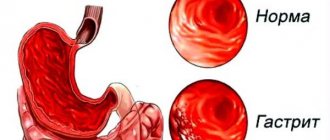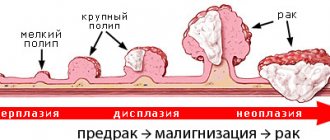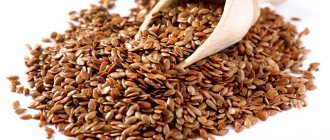The drug belongs to antibacterial agents that are prescribed for inflammatory processes in the gastric mucosa. Gastritis is a whole complex of different symptoms and diseases, the formation of which is often caused by bacteria. To diagnose this condition, you need to undergo an accurate and extensive examination and interview, during which a physician will test for the presence of Helicobacter.
Metronidazole is used in the complex therapy of gastritis
Metronidazole for gastritis is one of the most popular antibiotics, but due to the possible resistance of the strain, it is dangerous to prescribe the drug yourself. In addition, to treat this disease, doctors use certain triple or quadruple treatment regimens. The essence of the course is the simultaneous use of complementary medications (antibiotics, proton pump inhibitors, bismuth).
Composition and release form
Metronidazole is an active ingredient with therapeutic properties. The concentration and composition of additional substances depend on the dosage form and manufacturer.
It is produced in the form of a solution, tablets, gel and suppositories.
Metronidazole in tablet form
For oral administration. The special shell of the tablet form facilitates the absorption of the active component in the digestive tract. The standard dosage per tablet is two hundred and fifty milligrams.
Package
Metronidazole solution
Liquid dosage form for intravenous administration (infusion). One milliliter of solution contains five milligrams of the active component. One bottle contains five hundred milligrams.
Metronidazole suppositories
Solid fat is usually used as an excipient. The standard dosage in one suppository is five hundred milligrams.
For intravaginal use.
Metronidazole gel
Topical dosage form with systemic action. The concentration of the active substance is usually 1%. One hundred grams of gel contains one gram of antimicrobial substance. For vaginal use.
How to support your gut while taking antibiotics
However, like any strong medicine, antibiotics also have their side effects. Especially often, people began to face the consequences of taking antibiotics when semi-synthetic penicillins in tablet form became widespread (before that, penicillin was administered in the form of injections).
Taking the pill does not require outside help, and people began to indulge in self-medication, and doctors began to prescribe antibiotics at any opportunity. One of the consequences was that patients, after completing treatment, encountered unpleasant consequences in the form of intestinal disorders. The reason is that antibiotics killed not only pathogenic bacteria, but also beneficial ones. As a result, a person develops so-called iatrogenic dysbiosis.
Therapeutic effect
According to the classification, the active component belongs to antiprotozoal and antibacterial medicines. After assimilation of the dosage form, the chemical compound penetrates into the cells of pathogens, where the 5-nitro group is restored. The reduced substance disrupts the reproduction of the cell's genetic information. The death of the infectious agent occurs. Additional properties of the drug include increasing the sensitivity of tumor tissue to radiation therapy, enhancing the toxic effect of ethanol on the body and stimulating regenerative processes.
Activity spectrum
Used together with amoxicillin helps treat infection caused by Helicobacter pylori infestation. An additional antibacterial agent eliminates the factor of bacterial resistance to metronidazole.
What antibiotics are usually prescribed for gastritis?
The harmful bacterium that causes gastritis has a favorite habitat - the gastric mucosa.
The list of antibiotics may include 4 groups of basic drugs, each of which has a specific basis:
- Clarithromycin (Klacid SR, Binoclair, Clarexid).
- Omeprazole (Omefez, Promez, Omez).
- Amoxicillin (Amoxil, Amoxiclav, Amoxicar).
- Nitroimidazole (Metronidazole, Ornidazole).
The beginning of such therapy was laid by Barry Marshall, who participated in the discovery of the bacterium Helicobacter pylori and proved the high effectiveness of taking the antibiotic Metronidazole. It was with its help that it was possible to achieve complete destruction of the bacterium (eradication). Currently, this can be achieved by using multiple antibiotics in the right combination.
Metronidazole
The historically proven effect, tested by Barry Marshall himself, unfortunately, has lost its enormous popularity in the treatment of gastritis and ulcers due to the increase in bacterial resistance to the drug. Studies have proven this resistance; 60% of patients showed resistance to the drug metronidazole, which is a significant indicator not in its favor. Therefore, the drug is combined with the antibiotic Amoxicillin.
One of the most popular means used as a weapon against Helicobacter pylori. This antibiotic has an impressive spectrum of action, which is often supported by antisecretory drugs to speed up and increase the efficiency of cleansing the body of bacteria. By the way, Clarithromycin (Klacid SR) causes almost no side effects in 98% of patients. Klacid is available in several versions:
- Klacid and Klacid SR in tablet form.
- Klacid in powder form for preparing a suspension.
- Klacid in the form of a soluble substance for the preparation of a solution for infusion.
The release form determines the main characteristics of the drug. Thus, Klacid SR tablets have a prolonged action, and Klacid are immediate-release tablets. The advantage of Klacid SR is its long-term effect, including on Helicobacter.
Amoxicillin
Amoxicillin is an antibiotic with increased acid resistance. This is a semi-synthetic drug with a pronounced bactericidal effect. The spectrum of action of the antibiotic Amoxicillin is quite wide; sensitivity to it is manifested by many bacteria.
Side effects
Sometimes, during drug therapy, undesirable reactions appear due to the effect of the active component on tissues and organs. A typical adverse reaction is the sensitivity of the immune system to the substances contained in the dosage form (allergy).
Main undesirable effects:
- Digestive system: abdominal discomfort, loose stools, exhaustion, lack of appetite, vomiting, intestinal colic, stool retention, mechanical taste, inflammation of the tongue, inflammation of the pancreas, dry mucous membranes, stomatitis.
- Nervous system: cephalalgia, dizziness, impaired coordination of movements, damage to peripheral nerves, decreased mood, excessive agitation, impaired consciousness, irritability, sleep disturbance, convulsive reactions, fatigue, hallucinations.
- Organs of the excretory and reproductive systems: impaired urination, coloration of urine (reddish or brown), inflammation of the bladder, frequent urge to urinate and large volumes of urine, impaired conscious control of urination, fungal infection of organs (candidiasis).
- Immunity: skin rashes, redness of the integumentary tissues, increased body temperature, joint pain, nasal congestion, urticaria.
- Local manifestations (suppositories and gel): pain in the penis area of the sexual partner, frequent urge to urinate, inflammatory processes, itching, redness of the mucous membranes of the genital organs.
- Others: decreased white blood cells, neutrophil deficiency, flattening of the T wave on the electrocardiogram, increased levels of liver enzymes and impaired bile secretion into the intestines (solution), thrombosis and inflammation of the vein (solution), discomfort and swelling in the injection area.
Side effects depend on the dosage form. Local reactions are typical for suppositories and gel.
Possible side effects
Like any modern antibiotic, Metronidazole has a whole range of side effects. The active substance of the antibiotic is characterized by high penetrating ability, so it easily penetrates into any biological fluids, including saliva, breast milk, blood, and saliva. It also has the ability to accumulate in tissues (in particular, in the brain). The placental barrier, which protects the intrauterine fetus from external influences, is also not an obstacle to Metronidazole.
Therefore, it is not recommended to prescribe Metronidazole as antibacterial therapy for gastritis to pregnant/lactating women, as well as to patients with a history of serious pathologies of the liver, blood, kidneys, as well as to people suffering from serious ailments of the central nervous system. The antibiotic is not prescribed to children under three years of age.
Side effects from the digestive system
Side effects of metronidazole:
- digestive tract: the possibility of various manifestations of dyspepsia, including vomiting, loss of appetite;
- nervous system: frequent cases of headaches, sleep disorders, causeless mood swings, and depressive states;
- there may be a change in the color of urine (this is normal) and increased frequency of urination (in such cases, the drug should be discontinued);
- Side effects are especially common when antibiotics are not taken on time, including irritability, increased urination, insomnia, intestinal dysfunction with frequent diarrhea and constipation.
https://www.youtube.com/watch?v=_y235lM8asA
Attention! If such disorders occur, it is necessary to urgently consult with your doctor, who will adjust the antibacterial therapy regimen.
How to take metronidazole
If treatment for gastritis is not started in time, an ulcer will form in the stomach over time. However, not everyone is allowed to take Metronidazole. The components of the drug have good penetrating ability, so their concentration in internal organs, brain tissue, and biological fluids is high.
Treatment of gastritis with Metronidazole is contraindicated if the patient has:
- pathologies of the nervous system;
- dysfunction of the liver and kidneys (especially in the stage of decompensation);
- dysfunction of the hematopoietic system or problems with blood.
It is not advisable for pregnant women and nursing mothers to take Metronidazole. When using the drug independently or changing its dosage, the following side effects may develop:
- disorders of the nervous system: headache, depression, increased irritability, sleep disturbances;
- changes in stool, bloating, nausea and vomiting;
- increased urge to go to the toilet;
- decreased libido in men and women.
Metronidazole should not be used if gastritis is detected in a child under 3 years of age. If the patient experiences symptoms of overdose or adverse reactions, it is necessary to immediately consult a doctor to decide whether further use of the antibiotic is appropriate.
Absorption and excretion
All dosage forms are well absorbed and have a systemic effect. The drug substance is distributed in the body, penetrates biological barriers and is distributed in different anatomical structures. Found in cerebrospinal fluid and amniotic fluid. The binding rate to blood proteins reaches thirty percent. The substance is converted in the liver (partially). A metabolite is formed that has a therapeutic effect. The drug is excreted mainly in the urine and slightly through the digestive system. Possible accumulation of the chemical compound upon repeated administration against the background of impaired renal tissue function.
Possible negative reactions
Metronidazole tablets penetrate through biological fluids such as breast milk, urine, and saliva. It can also reach maximum concentrations in brain tissue and the placenta. Because of this feature, the drug is not usually prescribed to pregnant or lactating women.
The use of Metronidazole tablets for the treatment of an expectant mother is strictly prohibited. Even doctors don't prescribe them. If taken during pregnancy, there may be a risk to the fetus.
The drug should not be used if the patient has problems with the hematopoietic system, liver, or kidneys. It affects the central nervous system, so they are not taken for neurological diseases. Children under 3 years of age are not allowed to take Metronidazole for gastritis, even if a friend took this medicine.
After the appointment appears:
- dyspeptic reactions;
- vomit;
- decreased appetite.
While taking Metronidazole for gastritis, some patients experience severe damage to the nervous system.
Other side effects include:
- worsening sleep;
- insomnia;
- headache;
- I'm worried about depression.
If such symptoms occur, you should immediately stop taking the drug and consult a specialist. If possible, he should carry out pharmacological replacement.
During the course of treatment, the patient is required to monitor his urination process, because this drug increases the urge. As soon as the patient notices that he has begun to go to the toilet more often, it is necessary to stop taking the medication. If the liquid changes color, then this phenomenon is quite normal and you should not worry about it.
The drug must be taken correctly and there should be no spontaneous withdrawals. If you start a course of therapy with the maximum dosage, the risk of side effects increases. If there are side effects, you should stop taking it immediately. You should also consult your doctor.
Indications for use of metronidazole
It is used in the treatment of pathologies caused by pathogenic bacteria and protozoan microorganisms. Monotherapy or combination with other medications is possible. Often prescribed with other antibiotics to improve the therapeutic effect. The area of use depends on the dosage form.
Only a doctor determines the advisability of prescribing a medicine. Self-medication is prohibited.
Indications for solution and tablets
- Infectious processes of the intestines and other organs caused by protozoa. Pathogens include histolytic amoeba, Trichomonas, Leishmania, Balantidia.
- Infectious damage to the central nervous system, lung tissue, bones, joints, heart and other organs caused by bacteroids.
- Infectious lesions of the abdominal organs, pelvis and other anatomical structures caused by the invasion of bacteroides, clostridia, peptostreptococci and other drug-sensitive microorganisms.
- Other indications: Helicobacter pylori infection, septic form of infection, reducing the risk of developing infection after surgical treatment, alcohol dependence, radiotherapy for oncology, pseudomembranous colitis while taking other antibacterial medications.
Protozoa
Indications for local dosage forms
- Damage to the genitourinary system due to Trichomonas invasion, including inflammation of the bladder and vaginal mucosa.
- Nonspecific inflammation of the vaginal mucosa of various origins.
- Reducing the risk of anaerobic pathogen invasion after pelvic and abdominal surgery.
Information about the drug
Metronidazole is considered to be an antiprotozoal and a drug aimed at combating pathogenic microbes. It is classified as a 5-nitroimidazole derivative. The medication helps cope with Helicobacter pylori infection, as it eliminates various pathogenic variations, as well as protozoan microorganisms. The tablet destroys bacterial cells, causing their death.
If therapy is carried out in combination with a drug based on amoxicillin, the course will be aimed at eliminating the effect of Helicobacter pylori (suppressing the development of addiction to metronidazoles). Aerobic and facultative microorganisms are not sensitive to this medicine, but together with the combined flora it acts on the side of antibacterial agents that are more effective against ordinary aerobes. According to the instructions, Metronidazole causes disulfirom-like reactions and improves the recovery capabilities of damaged tissues.
The product is produced in tablets (250 mg), which are film-coated. This prohibits their division. Each package contains 20 tablets. It is necessary to purchase a whole pack at once and check that the instructions are included in order to know exactly how to take Metronidazole for gastritis. The patient can familiarize himself with this information, but he should be guided only by the doctor’s prescription and not deviate from the chosen dosage and frequency of administration.
Contraindications
Some patients are not prescribed the drug due to the increased risk of severe complications. The main contraindication is the sensitivity of the immune system to the active or auxiliary components of the dosage form. Before treatment, you need to study the composition and consult a doctor.
Other contraindications:
- Current or past decrease in white blood cell count.
- Disruption of liver tissue.
- Age up to 18 years (gel and suppositories).
- Breastfeeding period.
- First trimester of pregnancy.
- Organic pathology of the central nervous system, including epileptic seizures.
- Impaired coordination of movements.
- Allergy to nitroimidazole derivatives.
- Blood pathologies.
- Sensitivity of immunity to imidazoles.
Treatment is carried out carefully during the second and third trimester of pregnancy. Constant medical supervision is required.
Patient's question about the treatment of gastritis with medications
On the morning of October 1, 2012, I woke up from an unpleasant pain in my abdomen. All day the pain was stronger and weaker, and stopped by nightfall. Then until October 10 everything calmed down. On the evening of October 10 it happened again. By nightfall it stopped. And on October 24, my stomach started to hurt again. I turned to the therapist on duty, he told me to follow a diet, i.e. do not eat fried, spicy, salty foods, eat little and more often. He also prescribed omeprozole, trichopolum and sent me for an endoscopy.
I drank omeprozole, took trichopolum for 2 days and didn’t take it anymore, because... another therapist advised me not to do this. I was given an EGDS conclusion - Erosive esophagitis of the lower third of the esophagus. Cardia failure. Superficial gastroduodenitis. Gatekeeper deficiency. Duodeno-gastric reflux. With this, I went to my local physician and was diagnosed with chronic erosive gastroduodenitis. duodeno-gastric reflux. He prescribed me DENOL for 2 weeks, 1 tablet. x 3 times a day and OMEPROZOL 20 mg 1 capsule x 1 time a day for 1 month. She also told me to follow a diet - don’t eat dry food and don’t eat 2 hours before bedtime and that’s it. After treatment, I was sent again for endoscopy.
The doctor who performed the endoscopy concluded: Erosive esophagitis of the lower third of the esophagus. Superficial gastritis. The doctor also said that I have not yet fully recovered and most likely I will need to keep a diet and take care of myself all my life. Control gastroscopy once a year. Now I need to go to the therapist again to find out what to do next. In addition, I would like to add that I have been suffering from airy, acidic (with ejection) burps for about 15 years. Please tell me what kind of disease this is and whether I was prescribed the correct treatment?
Answered by Yulia Vladimirovna Lysak, gastroenterologist, therapist
With esophagitis, it is important not only to follow a diet, but also to change your lifestyle. You can’t bend your head down (only squat), don’t overeat, don’t wear tight-fitting clothes, sleep with the head end of the bed raised (i.e., it’s not the head that’s raised, but the upper body), don’t go to bed after eating, the point is that it’s necessary exclude everything that will increase the pressure in the abdominal cavity and, accordingly, the reflux of stomach contents into the esophagus. Nutrition: exclude sour juices, carbonated water, coffee, rich soups (soup is boiled in water, meat separately), apples, lemons, anything marinated. Long-term use of omeprazole (or Controloc, or Pariet, or Nolpaza, Nexium) 1-3 months.
Thanks for the answer! Today I had an appointment with my third general practitioner, no older than 30 years old (my local general practitioner is on maternity leave, so other general practitioners are replacing him), she gave me a doctor. diet No. 1 and told me that during sleep my head should be much higher than my body and prescribed the following: 1. Aevit, 1 tablet x 3 times a day with meals; 2. Motilium 1 tablet. x 3 times a day before meals for 2 weeks; 3. Nolpaza 20 mg, 1 tablet. x 2 times a day (morning, evening) for 30 minutes. before meals for 2 weeks, and then 1 tablet. X 1 time a day before meals (in the morning) for 2 weeks; 4. Suspension of choice - either Maolox or Phospholugel or Almagel, take 1 teaspoon each time after meals and before bedtime, for how long it is taken is not indicated. Do you think I was correctly prescribed treatment for erosive esophagitis of the lower third of the esophagus, superficial gastritis (gastroduodenitis)? What can you advise me in this case? I'll wait for an answer. Thank you for your attention.
Doctor: The treatment is correct. Almagel is taken to relieve heartburn, so you don’t need to take it for a long time, 1-2 weeks is enough. I would recommend taking Nolpaz or similar drugs for longer than a month - 1 month twice a day, then up to 3 months once a day. Good luck! Get well!
Instructions for using metronidazole
It is prescribed by a doctor after an examination and clarification of the cause of the symptoms. The doctor selects an effective treatment regimen. Methods of use depend on the dosage form. It is important to use the medicine at the same time every day and not miss a dose. The tablets are taken orally during meals or immediately after meals. Do not chew. You can drink it with milk. Suppositories and gel are used intravaginally. The solution is administered slowly intravenously (infusion).
Appointed by a specialist
The rules of use are briefly described for reference purposes. During treatment, you need to follow the instructions of the attending physician and the official instructions.
Taking pills
- Pathologies caused by Trichomonas in adults: two hundred and fifty milligrams twice a day for ten days or four hundred milligrams twice a day for five to eight days. Patients are simultaneously prescribed an intravaginal form. Sometimes additional courses of therapy are carried out with an increase in the daily dosage within one gram. Between courses of treatment there should be a break of a month. Sometimes the patient and sexual partner are prescribed two grams of the active ingredient once.
- Pathologies caused by Trichomonas in children: two hundred and fifty milligrams per day in children from two to five years of age, up to three hundred and seventy-five milligrams per day in children from five to ten years of age, five hundred milligrams per day for children over ten years of age. Take for ten days. The daily dosage is divided into two doses.
- Pathologies caused by lamblia in adults: five hundred milligrams twice a day for five to seven days.
- Pathologies caused by lamblia in children: one hundred and twenty-five milligrams per day in children under one year of age, two hundred and fifty milligrams per day in children from two to four years of age, three hundred and seventy-five milligrams in children from five to eight years of age, five hundred milligrams in children over eight years of age . Divide into two daily doses. For five days.
- Asymptomatic amebiasis with the detection of a cyst in adults: five hundred milligrams two or three times a day for five to seven days.
- Chronic course of amebiasis in adults: five hundred milligrams three times a day for five to seven days.
- Acute amoebiasis in adults: two thousand two hundred and fifty milligrams in three doses per day until signs of the disease disappear.
- Helicobacter pylori infection: five hundred milligrams three times a day for a week (together with other medications).
- Reducing the risk of developing infection after surgical treatment: from seven hundred and fifty milligrams to one and a half grams per day for three doses three or four days before surgery. Or one gram once on the first day after treatment. One or two days after treatment, when it can be administered orally, seven hundred and fifty milligrams per day for a week.
- Purulent damage to the liver tissue in adults: up to two thousand five hundred milligrams per day once or in two or three doses for three to five days. It is possible to use it together with other antibiotics according to a special regimen.
- Purulent damage to the liver tissue in children: a quarter of the adult dose for children from one to three years, a third of the adult dose for children from three to seven years, half of the adult dose for children from seven to ten years.
- Alcohol dependence in adults: five hundred milligrams per day for six months or longer.
- Pathologies caused by balantidia: seven hundred and fifty milligrams three times a day for five to six days.
- Pseudomembranous colitis: five hundred milligrams three or four times a day.
- Diseases caused by anaerobic microorganisms: up to two grams per day.
- Ulceration of the oral mucosa of infectious origin: five hundred milligrams twice a day for three to five days. Not used in pediatric practice for this indication.
If creatinine clearance is less than ten milliliters per minute, the daily dosage is halved.
Use of suppositories in adults
- Inflammation of the vaginal mucosa caused by Trichomonas: one suppository per day for ten days along with the oral form of the medication.
- Nonspecific inflammation of the vaginal mucosa: one suppository twice a day for a week. Possible combination with the oral form. It is also necessary to treat the sexual partner.
Use no longer than ten days and no more than three times a year.
Use of the gel in adults
Intravaginally. It is recommended to use five grams twice a day. In the morning and evening. The duration of therapy is five days.
Information on the use of the solution and additional information can be found in the official instructions (in the package).
additional information
- Possible unwanted interactions with other medications. Before therapy, you need to study the effects of interaction between different dosage forms (in the full instructions).
- During therapy you should not drink alcoholic beverages.
- During treatment for an infection of the vaginal mucosa, coitus should be avoided. It is important to treat the sexual partner.
- Therapy is discontinued if signs of complications from the central nervous system appear, including impaired coordination of movements, dizziness, hallucinations and weakness.
- The doctor monitors blood counts while taking the drug.
- The speed of psychomotor reactions may decrease during treatment.
Treatment regimens for gastritis with medications
Infection occurs in three ways: oral-oral, fecal-oral, and due to medical errors, for example, from untreated equipment.
Metronidazole is one of the drugs prescribed for gastritis
Meanwhile, the statistics are that 90% of all gastritis belongs to Helicobacter pylori. Symptoms do not always appear, but they can occur over the years, and from banal catarrhal gastritis, the disease can transform into atrophic gastritis, which, in turn, is a precancerous condition.
This happens only in 1% of all cases,” consoles Elena Kizova. Since Helicobacter is classified as a carcinogen, according to international standards it is important to carry out anti-Helicobacter therapy. There are four ways to get checked now. The first is the determination of antibodies in the blood, the second is taking a sample with an endoscope directly from the stomach. Here, much will depend on the test strips that are used when taking the analysis. They must certainly be of good quality, preferably from European manufacturers.
The third method detects Helicobacter in feces. And the last way is to determine the presence of bacteria using a breath test. This method is the simplest and most effective, but it is only done in Moscow and St. Petersburg.
Before the examination, you should not take antibiotics for a month, and drugs that reduce secretion for two weeks.
Helicobacter, like any other infection, is treated with antibiotics. However, the bacterium is unusual and does not respond to any one remedy. It must be treated with two or three antibiotics at once using a drug that reduces secretion.
Over the years, the cunning Helicobacter adapts to the antibiotics we prescribe. We have only four of them: Amoxicillin, Clarithromycin, Metronidazole and Tetracycline. At first we recommended a course of seven days, then 10, now 14. The most “terrible” treatment regimen of all existing ones involves taking 32 tablets a day! With this treatment, of course, there will be side effects.
In 30 - 50% of cases, treatment with antibiotics provokes diarrhea; less commonly, pseudomembranous ulcers, skin manifestations, and in older people and diabetes - candidiasis (activity of the Candida fungus inside the body) may occur. Candidiasis, in turn, can provoke allergies and attacks of bronchial asthma.
How to take Trichopolum for gastritis?
- July 26, 2018
- Gastroenterology
- Julia Saap
Gastritis is a disease that is caused by inflammation of the gastric mucosa. The disease occurs for various reasons and proceeds in different ways. Doctors refer to a number of gastrointestinal diseases under the general name “gastritis” if the mucous membrane is damaged. Treatment of gastritis with Trichopolum is one of the methods of treating the disease. The medication destroys the bacterium Helicobacter pylori and is used for bacterial vaginitis, trichomoniasis, amebiasis, and anaerobic infections.
Metronidazole for gastritis and ulcers #8212; instructions
This medicine belongs to the group of antimicrobial and antiprotozoal agents and is a synthetic broad-spectrum antibiotic.
For many years now I have been appearing on your TV screens every day and more than once we have talked about problems of the gastrointestinal tract. A lot has been said about methods of treating stomach diseases! In our program, we often talk about surgery and medicinal procedures, but we very rarely touch upon traditional methods.
Surely you are now at a loss about what other healing teas we can talk about in the treatment of the gastrointestinal tract? Indeed, ordinary tea can help in the treatment of such serious diseases as ulcers, gastritis, pancreatitis, etc. If you remember, several issues ago I talked about the possibility of triggering the regeneration of the body by influencing certain receptors of the cells of our body.
So, to heal the gastrointestinal tract and more, you need to start the return process, that is, return the cells to their original state. After all, medicine, for the most part, is a struggle with the investigation. But it is necessary to eliminate exactly the cause and return the body to its original state. That is why, after taking the correct dosage of certain substances that are contained in the Monastic Tea drink.
And how does it work, you ask? Will explain. Tea therapy, with the help of specific substances and antioxidants, affects certain receptors that are responsible for its regeneration and performance. Information about diseased cells is rewritten to healthy ones. As a result, the body begins the healing process, namely, it returns, as we say, to the point of health.
At the moment, there is only one center that collects and sells this Monastic Tea - this is a small monastery in Belarus. They talk about him a lot both on our channel and on others. And not in vain, I tell you! This is not just any ordinary tea, but a unique mixture of the rarest and most powerful natural healing substances.
Igor Krylov: Every day I felt improvement. The ulcer was receding by leaps and bounds! In addition, there was a general improvement in the body: pancreatitis stopped bothering me, I could afford to eat almost whatever I wanted. I believed it! I realized that this is the only way out for me! Then it was all over, the headaches went away.
At the end of the course I became absolutely healthy! Fully. The main thing in tea therapy is its complex effect. Classic treatment does NOT remove the ROOT CAUSE of the disease, but only fights its external manifestations. And Monastic Tea RESTORES THE WHOLE BODY, while our doctors are always bombarded with complex, incomprehensible terms and are always trying to sell expensive drugs that are of no use... As I already said, I tried all this on myself personally
Elena Malysheva: Igor, tell us more about the treatment process!
Igor Krylov: I couldn’t go to the Belarusian monastery itself, so I ordered Monastic Tea on this website. To receive it, fill out your details on the website, leave your working phone number so that they can contact you and discuss the details. I received the tea 4 days later, it came in a closed envelope, without identification marks.
Elena Malysheva: Thank you Igor, our operators will post a link to the website of the Belarusian Monastery so that you can place an order.
As you can see, the path to health is not so difficult. You can order monastery tea here. This is the official website.
Original Monastic Tea can only be ordered on the official website, which is published below. This product has all the necessary certificates and is tested for effectiveness. There are a lot of fakes in the CIS countries, ordering which you will not get the effect.
Attention: the information is not intended for self-medication. We do not guarantee its accuracy, reliability or relevance to your situation (although we strive to do so).
Treatment must be prescribed by a medical specialist.
Metronidazole is the first active substance that was once used to destroy the pathogenic bacteria helicobacter pylori for gastritis, gastroduodenitis and gastric ulcers.
This medicine belongs to the group of antimicrobial and antiprotozoal agents and is a synthetic broad-spectrum antibiotic.
Metronidazole helps not only with HP-associated inflammation of the stomach, but also with giardiasis, trichominiasis, peritonitis, and pneumonia.
Have you been struggling with GASTRITIS and ULCERS for many years without success?
“You will be amazed at how easy it is to cure gastritis and ulcers just by taking it every day...
Gastritis: what is it?
A disease in which the gastric mucosa becomes inflamed is called gastritis. It leads to an imbalance in the gastrointestinal tract and impaired digestion of food. The disease occurs in acute and chronic forms. For gastritis, Trichopolum is the best treatment option. The active substances in the drug destroy the bacteria that causes the development of the disease. In acute gastritis, inflammatory changes occur in the stomach, which are caused by irritants. Chronic is accompanied by restructuring and atrophy of the mucous membrane. The danger of gastritis is that in the absence of proper treatment, as well as improper therapy, the disease leads to the death of the patient. Gastritis is also a cause of cancer in the gastrointestinal tract.
How can you cure gastritis with tablets?
Helicobacter pylori is the most common infection on the globe. Three billion people are currently infected with Helicobacter gastritis, which is almost half of the entire population of the planet; among Russians, the number of infected people exceeds 70%!
The disease causes inflammatory changes in the mucous membrane of the stomach and duodenum and is fraught with cancer. The chief freelance gastroenterologist of the Ministry of Health of Nizhny Novgorod, head of the gastroenterology department of Clinical Hospital No. 13, Elena Anatolyevna Kizova, spoke about whether it’s worth sounding the alarm or whether everything is not as scary as it might seem at first glance.
Infection with Helicobacter pylori occurs mainly in childhood, since children do not always wash their hands, they themselves bite an apple and give it to a friend, and the infection is greater the more crowded the population is, the less sanitary and hygienic rules are observed, explains Elena Kizova. “In addition, the risk of infection is great if someone in the family is sick. What happens with small children? Mom stirred the porridge, tested it for temperature, and gave this spoon to the child. Therefore, it is very important to wash your hands and wash dishes.
Causes
Doctors often prescribe Trichopolum for gastritis. The product is proven, inexpensive and actively used in the fight against the disease. Doctors list the main causes of acute gastritis as:
- Eating poor quality food, eating foods contaminated with pathogenic bacteria.
- Infections that enter the stomach with Helicobacter pylori, which causes increased acidity.
- Ingestion of toxic substances into the stomach.
- Drinking strong alcohol.
- Taking nonsteroidal medications.
- Dysbacteriosis.
- Impaired metabolism.
The causes of chronic gastritis are:
- Infections.
- Infection of the body with parasites.
- Unbalanced diet.
- Eating junk food, too spicy, fatty, hot.
- Alcoholism.
- Bad habits (smoking).
- Stress, neurosis, depression.
- Helminthic infestations.
- Uncontrolled use of medications.
- Stomach operations.
- Endocrine disorders.
- Heredity.
- Chronic diseases.
Are antibiotics needed to treat gastritis?
“Recently, in the healthcare sector, they have finally started talking about the fact that by prescribing antibiotics, we disrupt the microflora of not only the intestines, but also the stomach,” says Elena Kizova. — Treatment regimens have appeared that include probiotic preparations in advance. Probiotics are based on either live bacteria of the intestinal microflora or their metabolic products. Such bacteria are Lactobacillus reuteri, which have antibactericidal activity. Lactobacillus reuteri is the main active component of the drug Helinorm.
Lactobacillus reuteri deprives Helicobacter of the ability to stick to the mucous membrane, explains Elena Kizova. — Together with Helicobacter, Lactobacillus reuteri form a complex and remove it from the body.
The drug "Helinorm" is recommended to be taken together with antibiotics for a course of 28 days, 2 capsules per day, in order to increase the effectiveness of therapy and minimize side effects. If gastritis does not make itself felt, but Helicobacter is detected in the body, it can be treated with Helinorm alone, without the use of antibiotics. In addition, Helinorm is recommended for patients who have recovered from Helicobacter to exclude the possibility of reinfection.
The probability of reinfection is 6% per year, explains Elena Kizova. “And here it must be said that doctors do not always talk enough with patients. Therefore, if a therapist or gastroenterologist has not prescribed Helinorm for you, you can simply remind the doctor about this medicine. In conclusion, it is worth saying that Helinorm is completely safe, and it is prescribed to children from 6 years of age.
Symptoms
Is it possible to take Trichopolum for gastritis? This is one of the drugs that is prescribed by your doctor if you have certain symptoms. You should not self-medicate if you discover the presence of a number of typical symptoms characteristic of gastritis:
- Constant nausea.
- Vomit.
- Lack of appetite.
- Pain in the upper abdomen that is sharp or burning. It goes away or gets worse when eating.
- Bloating.
- Feeling of fullness in the stomach after eating.
- Unpleasant taste in the mouth.
- General weakness, irritability.
- There is a yellow or white coating on the tongue.
- Dramatic weight loss.
- Fever.
- Heart problems, low blood pressure.
- Drowsiness or insomnia.
If gastritis is treated incorrectly or if you hesitate to see a doctor, it can cause serious complications. Among them are internal bleeding, sepsis, anemia, pancreatitis, dehydration, anorexia, ulcers, and stomach cancer. That is why many doctors recommend Trichopolum and other drugs that need to be taken in combination for gastritis.
Prescriptions and medications for exacerbation of gastritis
Gastritis is an inflammation of the gastric mucosa. Most often it appears in children before puberty.
This is due to both certain anatomical (for example, weakness of the pyloric sphincter and reflux of food with bile from the upper intestine) and age-related characteristics (insufficient secretion of gastric juice or, conversely, hypersecretion).
Children's gastritis most likely goes away by the age of 15-16 years. In this case, pediatricians say that the child has “outgrown” the disease and treatment will not be required.
Exacerbations of gastritis in adults are most often triggered by poor diet and taking medications that irritate the gastric mucosa.
The presence of Helicobacter pylori bacteria, which are recognized as the cause of exacerbations of gastritis in 80% of cases, stands out separately.
Gastritis can be with high acidity, low acidity and zero acidity (extremely rare). Treatment varies depending on the acidity, but the same medications are used to relieve exacerbations.
Signs of gastritis:
- pain in the upper part of the stomach and heaviness in the lower part;
- heartburn;
- children smell of acetone from their breath (rarely occurs in adults);
- chills, weakness, nausea.
How does body temperature behave in this case? The inflammatory process contributes to a situation in which the temperature can rise to 37 - 37.5.
In case of intoxication, for example, when acute gastritis is caused by poisoning, the temperature, on the contrary, may decrease. Most often, the temperature, even with severe exacerbation of gastritis, remains normal.
How long can an attack of acute gastritis last? If the cause of exacerbation of gastritis is a violation of the diet, then in a day or two, as soon as the secretory function improves (when switching to a diet and treatment at home), treatment is most often not required.
Each patient situation requires the development of a treatment strategy, but there are cases when established rules work and eradication therapy is prescribed without fail:
- Gastric and duodenal ulcers
- Genetic predisposition to cancerous tumors in this area
- Atrophic gastritis (precancerous condition)
- Functional dyspepsia
Antibiotics for gastritis are a cardinal, but necessary measure in the treatment process. Many variations have been developed, such as the aforementioned Amoxicillin and Metronidazole.
There are quite a lot of treatment regimens; if one of them does not work, then the next one is prescribed. Inflammation of the gastric mucosa can be the starting point for the development of other diseases. If characteristic symptoms and pain in the stomach appear, do not hesitate to contact a specialist!
The administration of Metronidazole in small dosages according to a specific scheme causes persistent alcohol intolerance in the treatment of alcoholism and withdrawal syndrome. When taking alcohol and therapeutic doses of the drug, very severe intoxication of the body is observed. Even small concentrations of alcohol, for example, in medicinal tinctures, can cause symptoms of poisoning.
Metronidazole has proven itself as a radiosensitizer - a drug that increases the sensitivity of malignant tumor cells to ionizing radiation. This solves the main problem of radiotherapy—selective exposure. Antibacterial prophylaxis in surgery and other invasive interventions now occupies a leading position, therefore the use of Metronidazole is indicated to reduce the risk of post-surgical infections.
How to treat
Before prescribing treatment, it is necessary to determine the type of gastritis: acute or chronic. If the disease occurs as a result of poisoning, it is necessary to begin therapy with gastric lavage. The patient is recommended to diet and take antispasmodics. Gastritis can be purulent, chemical, catarrhal, bacterial. Special methods of therapy are used for each. The only thing that remains is to follow a gentle diet.
For the treatment of chronic erosive gastritis, Trichopolum is one of the few drugs that effectively and quickly copes with the disease. It not only eliminates the symptoms, but also fights the cause, that is, it destroys bacteria and harmful microorganisms. Therapy for the chronic form includes taking medications, eliminating the cause of the disease, following a diet, and spa treatment. Treatment of gastritis with folk remedies is also possible. Medications are prescribed by the doctor taking into account the acidity of the stomach. If it is elevated, it is advisable to take adsorbent, enveloping, antacid agents. If the acidity level is low, drugs are recommended that enhance the secretory function of the stomach.
Treatment of chronic gastritis with medications
If a patient has gastritis with increased secretory activity, gastritis therapy includes drugs that reduce gastric acidity, so-called proton pump inhibitors.
If a patient has gastritis with increased secretory activity, gastritis therapy includes drugs that reduce stomach acidity, so-called proton pump inhibitors.
They are divided into five generations:
- Omeprazole (Omez)
- Lansoprazole (Lanzap),
- Pantoprazole (Nolpaza, Zypantol)
- Rabeprazole (Pariet)
- Esomeprazole (Nexium)
As well as antacid drugs (Gaviscon, Rennie, Almagel, Maalox). It is preferable to use preparations containing carbonates and not containing aluminum (Gaviscon, Rennie).
Antacids are first aid drugs if a patient has heartburn; if it is difficult to see a doctor at the moment, the patient can take an antacid on his own.
Description of the drug
Doctors sometimes prescribe Trichopolum for gastritis if the disease is bacterial. The drug is not modern, but is still used. "Trichopol" is a synthetic antibacterial agent that is included in the complex therapy of gastritis. It is appropriate to use together with tablets that reduce stomach acidity. If gastritis is not caused by bacteria, these tablets are not prescribed. The active substance in the composition is metronidazole. It acts as an antibiotic. Nifuratel has become an analogue of the drug in modern medicine. The medicine "Trichopol" not only destroys bacteria, but also relieves inflammation.
The drug is considered universal, as it is used for bacterial infections, vaginitis, urethritis, peritonitis, abdominal abscess, after surgery, to prevent complications. "Trichopol" destroys the cellular structure of Giardia, dangerous bacteria that affect the human liver and intestines. The product inhibits the activity of anaerobic bacteria, trichomoniasis pathogens and other harmful microorganisms. "Trichopol" is not recommended for use by children under 18 years of age. If it is prescribed, the course of treatment is carried out under the supervision of a doctor.
Benefits of an antibiotic
The active substance metronidazole is the main component of the drug of the same name, used for the treatment of gastritis caused by the pathogenic Helicobacter pylori microorganism. In medical practice, it was the first to be used for this purpose, but to this day this medicine has not lost its popularity.
This antimicrobial and antiprotozoal drug is produced by the modern pharmacological industry in the form of solutions for infusions (droppers), mixtures and tablets for oral use, and suppositories.
https://www.youtube.com/watch?v=_y235lM8asA
Most often, for gastritis, Metronidazole is prescribed in tablet form. The tablets are white with a slight greenish-yellow tint and a transverse stripe.
In addition to the active substance, the drug contains potato starch, stearic acid and povidone. But due to the fact that this medicine has certain contraindications, when prescribing it, it is necessary to provide the gastroenterologist with the following information:
- recent renal dialysis;
- history of liver pathology;
- alcohol addiction;
- the presence of such a rare blood disease as porphyria;
- planning or carrying a pregnancy;
- breastfeeding a baby.
Analogs of Metronidazole are drugs such as Tinidazole, Ornidazole, Trichopolum and Secnidazole, which have significant differences in auxiliary components. This is an important factor when prescribing drugs to patients with a tendency to have an allergic reaction.
Peculiarities
Is it possible to take Trichopolum for gastritis? The peculiarities of treating the disease with this medicine are that it is antibacterial and antiprotozoal. The drug is prescribed only in combination to eradicate the bacterium Helicobacter pylori. "Trichopol" is not used without drugs that reduce stomach acidity. It should not be prescribed for the treatment of stomach and duodenal ulcers. The tablets are quickly absorbed in the intestines and reach their highest concentration within three hours after administration and are evenly distributed in the body. Completely excreted by the kidneys and liver after eight hours.
While taking Trichopolum, the patient's urine turns dark brown due to the presence of dyes in the composition. If the drug is used simultaneously with lithium preparations, it is necessary to monitor the level of the substance in the blood. Its excess leads to intoxication of the body. Trichopolum can enhance the side effects of some medications. It is dangerous to take it simultaneously with the active substances astemizole, terfenadine, disulfiram. Side effects include nausea, vomiting, ataxia, and convulsions.
Choice of antibiotics
Antibiotics for gastritis, their dosage and duration of treatment must be prescribed by a doctor. Self-medication and uncontrolled use of medications can cause stomach ulcers and other complications. The treatment regimen most often includes the following drugs:
- Clarithromycin.
- Amoxicillin.
- Metronidazole.
- Omeprazole.
The first treatment regimen was created by Barry James Marshall and was based on the positive properties of the antibacterial drug Metronidazole. The antibiotic made it possible to completely eliminate pathogenic bacteria and cure gastritis. At the moment, it is also used in therapy, but not so actively. It is believed that Helicobacter Pylori very quickly develops resistance to it.
Clarithromycin is a broad-spectrum antibiotic that only rarely causes unpleasant side effects. Available in the form of tablets, solution and suspension. The drug in tablet form should be prescribed strictly by the attending physician, as it is not suitable for everyone. Most often, a suspension is used for gastritis.
Amoxicillin is prescribed in combination with Metronidazole. This antibiotic has increased resistance to acids, which makes it effective for treating gastritis. Amoxicillin Metronidazole is the most popular treatment regimen for gastritis. Almost always, treatment regimens for gastritis include Metronidazole.
Many patients do not understand why they need to take two antibiotics at once. The thing is that pathogenic bacteria quickly get used to antibacterial drugs and their effectiveness is reduced to zero.
If gastritis is not caused by Helicobacter, then taking antibiotics does not make sense. This will only negatively affect the mucous membranes and aggravate the disease. Medicines should be prescribed by a gastroenterologist. Without test results, based only on symptoms, antibiotics for gastritis are not prescribed.
How to use
One Trichopolum tablet contains 250 mg of metronidazole (active substance), potato starch, magnesium stearate, gelatin, and starch syrup. How to take Trichopolum for gastritis? The most common regimens include taking the drug 250 mg four times a day or 500 mg twice a day during and after meals. The maximum period of treatment is fourteen days. Patients diagnosed with liver or kidney failure require an individually selected treatment regimen. High concentrations of the active substance in the liver can lead to coma. In elderly patients, the dose of metronidazole should be reduced. During treatment with the drug, you should not drink alcohol. After taking Trichopolum, candidiasis of the digestive tract sometimes develops. In this case, the doctor prescribes antifungal agents. The medicine causes weakness, dizziness, psychomotor reactions decrease, confusion occurs, and convulsions appear.
Many patients are interested in: “Trichopol” treats gastritis or not? The drug is used if the cause of the disease is the bacterium Helicobacter pylori, various infections, and the treatment regimen prescribed by the doctor does not help. You cannot take Trichopolum if the patient has blood diseases, impaired coordination of movements, is diagnosed with liver failure, or central nervous system diseases. Individual intolerance to the active substance is an absolute contraindication for use. If gastritis appears during pregnancy, the disease must be treated with Trichopolum very carefully. In the first trimester, its use is prohibited. In the second, you can take the medicine if the benefits to the woman outweigh the risks to the fetus. The medicine quickly penetrates the placenta and is excreted into milk, so it should not be used during lactation.
Features of application
The main active ingredient of the antibiotic is Metronidazole. It was this drug that was the first to be used in the treatment of all forms of gastritis caused by Helicobacter pylori infection. And it has proven its effectiveness, remaining today the most popular means of antibacterial therapy.
Metronidazole belongs to a group of antiprotozoal/antimicrobial drugs used in the form of suppositories, infusion solutions, tablets and mixtures. Typically, for gastritis, this antibiotic is prescribed in the form of orally taken white tablets with a light light green tint. In addition to metronidazole itself, the medication contains povidone (a local antiseptic), stearic acid and vegetable starch.
How to take Metronidazole for gastritis is decided only by a gastroenterologist: the drug is characterized by a fairly large list of contraindications, so when determining a treatment regimen, it is necessary to take into account a number of factors:
- whether the patient has undergone kidney dialysis in the foreseeable past;
- whether he abuses alcohol;
- whether the patient has a history of renal pathologies;
- porphyrin disease is also a direct contraindication to the use of metronidazole;
- The drug is also prescribed to pregnant and breastfeeding mothers with great caution.
Metronidazole is the main active substance in a number of analogues of the drug (Ornidazole, Tinidazole, Secnidazole, Trichopolum), the composition of which differs in auxiliary components. They are prescribed taking into account the possible presence of allergic reactions to any components of these antibiotics.
The principle of action of Metronidazole is to block the respiratory abilities of pathogenic bacteria, as well as to disrupt the mechanism of protein synthesis of Helicobacter. After taking the drug, they actively participate in metabolic processes, affecting H. pillory in the digestive tract, after which they enter the liver, where the active substance is metabolized. 20% of it is excreted in feces, 80% in urine.
The method of taking the antibiotic is during/after meals, swallowing whole with plenty of liquid. The usual dosage of the drug is 6 tablets/day (single dose - 2 tablets). You should take the antibiotic no longer than a week (minimum 5 days). Metronidazole is usually prescribed together with Amoxicillin or Clarithromycin - the use of two antibiotics with different active ingredients is usually much more effective than monotherapy.
Metronidazole and Amoxicillin (Clarithromycin) for gastritis and the presence of inflammatory processes in the digestive tract are prescribed only in case of positive tests for the presence of pathogenic microorganisms. If necessary, instead of Metronidazole, its analogue can be prescribed.
It has been proven that antibiotic therapy using a two-component regimen is much more effective than using a single drug, and the combination Metronidazole Amoxicillin is most often prescribed. In this case, the gastroenterologist needs to take into account many factors that influence the dosage and time schedule of taking antibiotics: the degree of neglect of gastritis, the presence of concomitant diseases, the form of gastritis, the duration of inflammatory processes, etc.
Amoxicillin is a synthetic bactericidal antibiotic of the penicillin group, which has a fairly broad spectrum of action. Its composition is similar to Ampicillin, differing in the presence of an additional hydroxyl group, which increases the absorption properties of the drug in tablet form. The principle of action of Amoxicillin is to block the synthesis of the cell membrane of Helicobacter, therefore it is most often prescribed as a joint antibacterial therapy for gastritis along with Metronidazole.
How to take amoxicillin and metronidazole for gastritis is decided by the doctor based on the results of laboratory/instrumental tests, primarily tests for the presence of Helicobacter. For adults, this is usually one and a half to two grams of antibiotics taken twice a day.
Duotherapy with antibiotics according to the accepted scheme turns out to be very effective not only against pathogenic, but also beneficial intestinal microflora, therefore dysbiosis is a frequent companion to such treatment.
After antibiotics, it is necessary to normalize the intestinal microflora
It should be noted that treatment of even mild forms of gastritis is a long process (at least a month), and antibiotics are taken for no longer than a week. After a course of antibacterial therapy, to achieve normal intestinal microflora and compensate for the deficiency of bifidobacteria and lactobacilli, probiotics are prescribed - biological additives that restore microbial balance: Linex, yoghurts in capsule form, Bifiform, etc.
To avoid severe forms and manifestations of dysbacteriosis, it is recommended to include fermented milk products in the menu while taking antibiotics (for gastritis with normal/low acidity).
https://www.youtube.com/watch?v=r1PPet0-0JQ
Independent uncontrolled use of antibiotics for the treatment of gastritis and other gastrointestinal pathologies is fraught with serious complications, including the development of liver failure.
For erosive gastritis, Metronidazole should be taken three times a day during or after meals. The maximum daily dose is 6 tablets. You can't chew them. They are swallowed whole and washed down with water (large quantities). The maximum duration of the therapeutic course is 7 days.
Helicobacter is an insidious bacterium, as it quickly loses sensitivity to antibiotics. Therefore, even a mild form of gastritis is difficult to treat. To cope with the disease, Metronidazole is used in conjunction with other drugs: Amoxicillin. This scheme is used only if the test for the presence of pathogenic microflora in the stomach is positive.
The dosage of the drug is calculated by the doctor. The standard treatment regimen for gastritis with Metronidazole involves taking the drug twice a day, 500 mg.
Reviews
Is it worth taking Trichopolum for gastritis?
Reviews from patients who have undergone therapy with various drugs indicate that the medicine really helps with gastritis caused by the bacterium Helicobacter pylori and various infections. Tablets eliminate symptoms and attack the cause of the problem. You should take the medicine only as prescribed by your doctor. The advantages of Trichopolum include low price and versatility. It successfully treats sexually transmitted diseases. Disadvantages include the presence of contraindications and side effects. Trichopolum for gastritis reviews
special instructions
Ulcerative gastritis is a serious pathology that is difficult to treat. Metronidazole is most often used for this purpose, but this medicine is an antibiotic, and therefore has special instructions for use:
- After taking the pill, you should not drive a car for the next few hours, as side effects such as dizziness, clouding of consciousness, and slow psychomotor functions are possible;
- If the functionality of the liver and kidneys is impaired, treatment of gastritis requires adjustment of the dosage of Metronidazole;
- If it is necessary to use the drug with indirect anticoagulants, you need to carefully review the contraindications and establish the rate of administration of the anticoagulant;
- When taking the medicine simultaneously with antacids, its absorption by the gastric mucosa slows down.
Reviews about the drug
When used simultaneously with anticoagulants, blood clotting may decrease.
The use of medications that affect the stimulation of liver enzymes can reduce the level of metronidazole in the blood.
Combined use with psychotropic drugs from the group of mood stabilizers increases the lithium content in the blood.
Sulfonamide-type drugs increase the bactericidal effect of metronidazole.
Reviews about Trichopolum are both positive and negative. For some patients, this medication effectively and quickly relieved infectious diseases. For others, it caused a lot of side effects and did not bring the expected result. This medicine should be taken only as prescribed by your doctor.
Trichopolum
Trichopolum ®
(lat.
Trichopol
®) is an antibacterial antiprotozoal drug. The active ingredient is metronidazole.
Dosage forms of Trichopolum
Trichopolum activity against pathogenic microorganisms
Trichopolum for eradication of Helicobacter pylori
Trichopolum is sometimes prescribed as one of the antibiotics as part of complex therapy for the eradication of Helicobacter pylori
.
Trichopolum is not used in the eradication of Helicobacter pylori
outside of special regimens, without drugs that reduce gastric acidity.
Trichopolum is also not used in any form for the treatment of gastric and duodenal ulcers and gastritis in the absence of Helicobacter pylori in the patient.
According to the Maastricht Agreements, the active substance trichopolum, metronidazole, is recommended as one of the antibiotics for the eradication of Helicobacter pylori.
However, in Russia, due to the very wide and not always correct use of metronidazole, the level of resistance to metronidazole is almost twice as high as the European average: 55.5% in Russia and 25.5% in Europe (Maev I.V., Vyuchnova E.S., Shchekina M.I.).
In Russia, it is recommended to use nifuratel in treatment regimens instead of metronidazole (Shcherbakov P.L.). Also, according to modern Russian Standards for the diagnosis and treatment of acid-dependent and Helicobacter pylori-associated diseases, trichopolum is allowed only in one of the “second-line” regimens (used if the patient had unsuccessful treatment of Helicobacter pylori
according to one of the “first-line” regimens): trichopolum according to 500 mg 3 times a day, bismuth tripotassium dicitrate 120 mg 4 times a day, tetracycline 500 mg 4 times a day and one of the proton pump inhibitors in a standard dosage (omeprazole 20 mg, lansoprazole 30 mg, pantoprazole 40 mg, esomeprazole 20 mg , rabeprazole 20 mg 2 times a day) for 10–14 days.
Methods of using trichopolum and dosage
Use of Trichopolum during pregnancy and breastfeeding
Trichopolum is contraindicated in the first trimester of pregnancy; in the second and third trimesters it should be taken with caution only if the benefit to the pregnant woman outweighs the risk to the unborn child, given that metronidazole crosses the placenta. FDA category of effect on the fetus is B.
Trichopolum (metronidazole) is excreted into breast milk, creating concentrations similar to those in blood plasma. May impart a bitter taste to breast milk. To exclude the effect of Trichopolum on the child, breastfeeding while taking Trichopolum and for another 2 days after the end is not recommended.
general information
According to the pharmacological index, trichopolum belongs to the groups “Other synthetic antibacterial agents” and “Medicines for the correction of disorders in alcoholism, toxic and drug addiction”, according to the ATC - to the subgroup “J01XD01 metronidazole” of the group “Imidazole derivatives”, as well as to the subgroup “A01AB17 metronidazole "Group "A01AB Antimicrobials for local treatment of diseases of the oral cavity."
Trichopolum has contraindications, side effects and application features; consultation with a specialist is necessary.
Company manufacturer
trichopolum - Polpharma, Poland (JSC Akrikhin).
On the website gastroscan.ru in the literature catalog there is a section “Antibiotics used in the treatment of gastrointestinal diseases”, containing articles on the use of antimicrobial agents in the treatment of diseases of the digestive tract.
Instructions for medical use of trichopolum
Contraindications and adverse reactions
Not everyone is allowed to use Metronidazole for the treatment of stomach diseases. The medicine should not be used by patients with hypersensitivity to its components, pregnant or nursing mothers. The drug is contraindicated in patients who have been diagnosed with severe pathologies of the central nervous system, as well as those who have been diagnosed with acute liver or kidney failure. In addition, a contraindication to the use of Metronidazole is a pathological condition, which is characterized by a reduced number of leukocytes in the blood.
PAY ATTENTION! Do not prolong gastritis or an ulcer until stomach cancer, it is better to be on the safe side, but this will be necessary. read the story of Galina Savina >>
In most cases, the drug is well tolerated, but if it is abused, side symptoms will not take long to appear. And then the patient may face such undesirable consequences as:
- flatulence, frequent loose stools;
- severe itching of the skin, urticaria;
- increased body temperature;
- pain in the temples and back of the head, dizziness;
- urinary disturbance;
- dry mouth.
Return to contents
Dosage form
A drug such as Trichopolum may have several dosage forms. As a rule, you can purchase oral tablets that contain 250 mg. active substance or tablets for vaginal use, their composition contains metronidazole up to 500 mg. If necessary, on the recommendation of a doctor, you can use a solution for infusion; it is sold in ampoules of 20 ml. Each of them contains 100 mg. active remedy.
As a rule, Trichopolum is able to cure infections such as trichomoniasis, giardiasis, and amebiasis. At the same time, this drug helps get rid of liver abscess, peritonitis, endometritis, pneumonia, sepsis, and endocarditis.
Who should stop using Trichopolum?
If a patient decides to take Trichopolum for the treatment of gastritis, he should first familiarize himself with a number of existing contraindications. As a rule, anyone who suffers from pathologies such as blood disease, poor coordination, or liver failure should avoid using the drug. Naturally, anyone who has diseases of the nervous system and is sensitive to metronidazole should not take the medicine.
If a pregnant woman consults a doctor and needs to take Trichopolum in order to reduce the manifestations of gastritis, the drug must be used with extreme caution. It is extremely important to avoid its use during the first trimester. Subsequently, the doctor needs to compare the percentage of benefits and risks for the unborn child.
Studies show that metronidazole is able to be absorbed into the placenta. When the drug is consumed by the mother of the baby, metronidazole passes to the baby through mother's milk, producing a bitter taste. During lactation it is better to avoid taking this medication. In the event that treatment is carried out exclusively with tablets, breastfeeding will have to be abandoned, giving the child breast milk only two days after the full course of treatment has been completed.











